“Special Ops: Lioness” Cinematographer & Director Paul Cameron on Taylor Sheridan’s International Thriller – Part Two
As noted in part one of our interview with Paul Cameron, he took his first turns at directing for series helming two episodes of Westworld, and he drew on his experience as a cinematographer and from his work for some pretty important mentors. “I learned so much from working with Tony Scott,” Cameron said, referring to collaborating with Scott on films like Man on Fire and Déjà Vu. “Tony was all about really understanding the authenticity of situations and characters and really digging into the reality of a scene. And, more than anything, watching a very playful director manifest the performance he was going after. He knew what scenes were going to be like in the editing room and had a very playful way of setting things up to ensure that the end result would be what he thought it would be.” Cameron learned, for example, how to apply creative and innovative camera techniques to bring out even more.
Working with Jonathan Nolan on Westworld, he saw a director who “had linear beliefs of story and stayed with it, and doing that within the work of television,” he says. “The reason I started directing there was because I could see somebody setting the bar as high as I’ve ever seen.” He also learned how to handle a massive amount of scenes in a limited time window. “We might lose a day for some reason and need to make it up, and even with all my experience, I was, like, ‘Oh, my God – how are we gonna do all this stuff?’ And, inevitably, we did it. And that gave me great confidence when I went to direct on Westworld. I knew, “Don’t sell yourself short. Go in big, and stay big, and go after it like there’s no tomorrow.’ And that, I got from Jonah.”
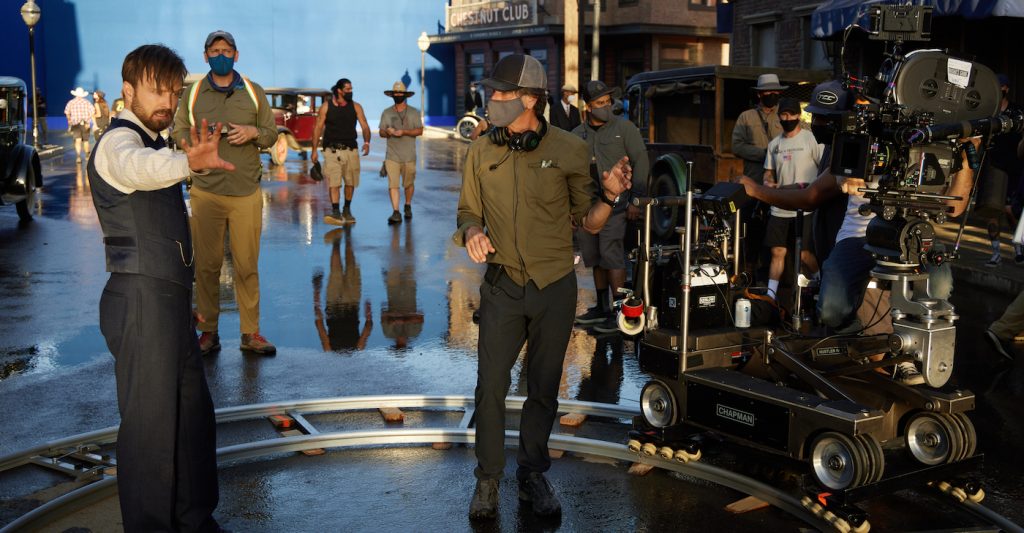
For Special Ops: Lioness, he had to hand his director of photography hat to cinematographers like Niels Albert, John Conroy, and Nichole Hirsch Whitaker, something that can be difficult for someone who’s been in their shoes for so many decades. “It’s a challenge for me – because I’m so trained!” he laughs.
Most important, he says, is to make sure to include them in prep as much as possible, evaluating scenes and locations, “And to really be open to big decisions,” he says. “What is this scene about? What are the storytelling aspects, and how are we going to manifest it in this location?” And if changes occur that reshuffle a day’s shoot, Cameron wants his cinematographers to ask themselves, ‘How do we get the core shots to tell this story?’
For crafting scenes and blocking, Cameron draws on his decades of experience on big films with A-level actors, who often can be counted on to help with problem-solving. “But also talking about script and story, as I’ve done with them over the years. So it’s a very natural thing to talk to them about now, as a director.”
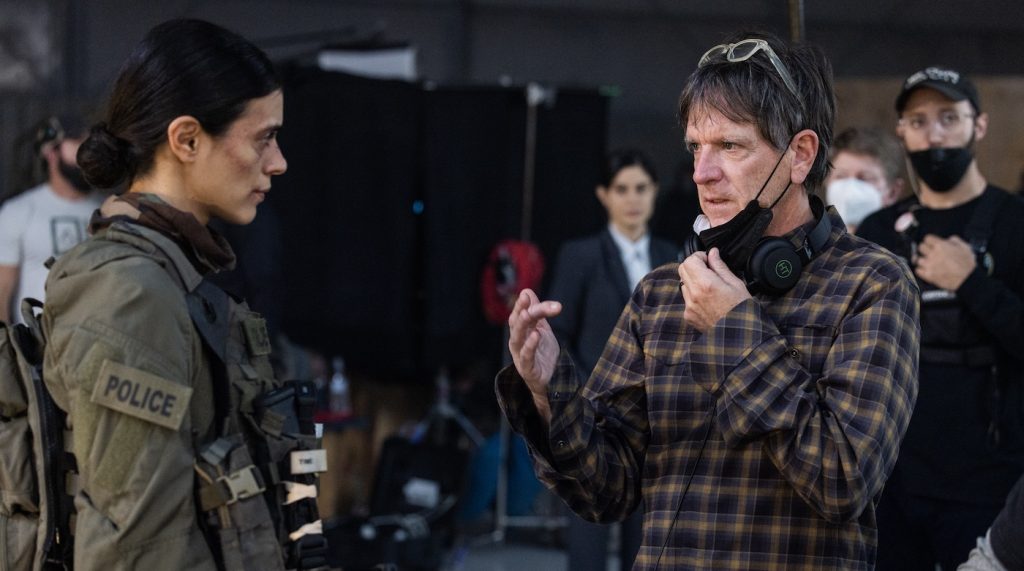
Regarding designing coverage, Cameron says it begins with poring over the script, then going to locations, and eventually rehearsing and blocking. With streaming television, he notes, there is often no time to discuss blocking or to get a rehearsal with actors before they go to Hair & Makeup. “Oftentimes, we’re just waiting for them to get out of Hair & Makeup and just run right into the shooting. But I know actors well enough to guess whether they’re going to be comfortable with a particular blocking from working as a DP for so many years.” But that also means being open to other ideas. “You have to be open to blowing apart whatever preconceptions you have and rolling with it. You take a deep breath, and you go for it.”
Cameron has to draw on his years of creative shooting to balance the needs of streaming producers with his desire to keep scenes alive. “A three-page scene can be fairly static. And the last thing I would want to do is shoot closeup coverage of the entire scene. For me, close-ups are extremely important, and there’s the tendency on streaming television to cut back and forth between close-ups. It’s the difference between theatrical films and streaming – films are about plot, streaming is about character. So I’ll shoot those close-ups to satisfy a showrunner, but save the hero close-ups for the times you know you’re going to need them editorially. And keep it real, keep it alive – plan on a particular line that I’m going to rack focus in on Nicole [Kidman] and then pan back to Zoe [Saldana].”
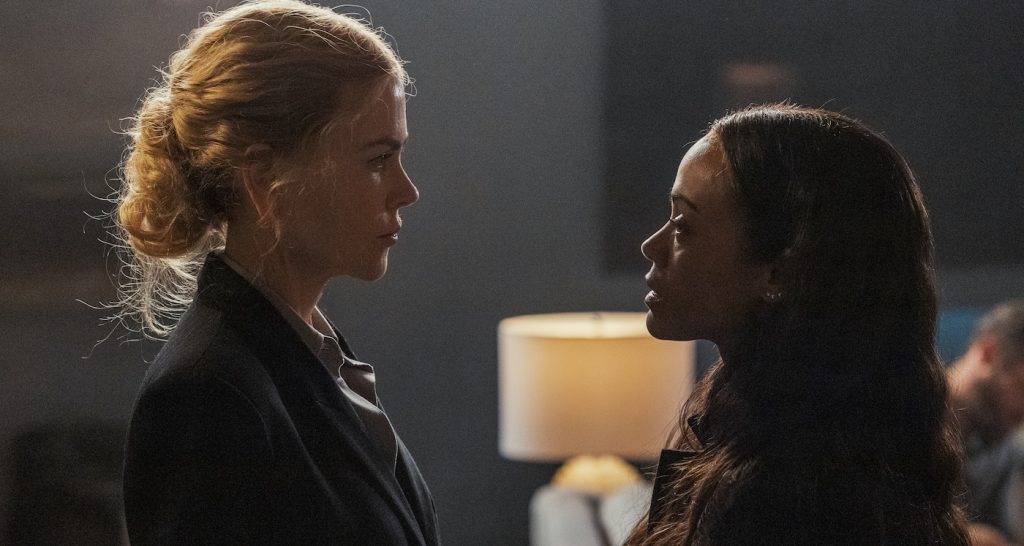
Directing (and working with) top-tier talent is not new to Cameron, having done so on Westworld, “But working with Zoe Saldaña, Nicole Kidman, Morgan Freeman, Michael Kelly – everybody here is a top actor.” So how does one direct cast members who are already at the top of their game, with decades of experience behind them? “The important thing is to create an understanding with the actors, so they feel that I’m turning them loose right away,” Cameron explains. “Let your instincts come out. Let it all come to the surface, and then let’s see what’s working, what’s authentic. As the director, it’s important to understand where actors are at any point, what they’re trying to convey as a character, and how they’re trying to work the dialogue. Then I have more ability to help them shape a scene.”
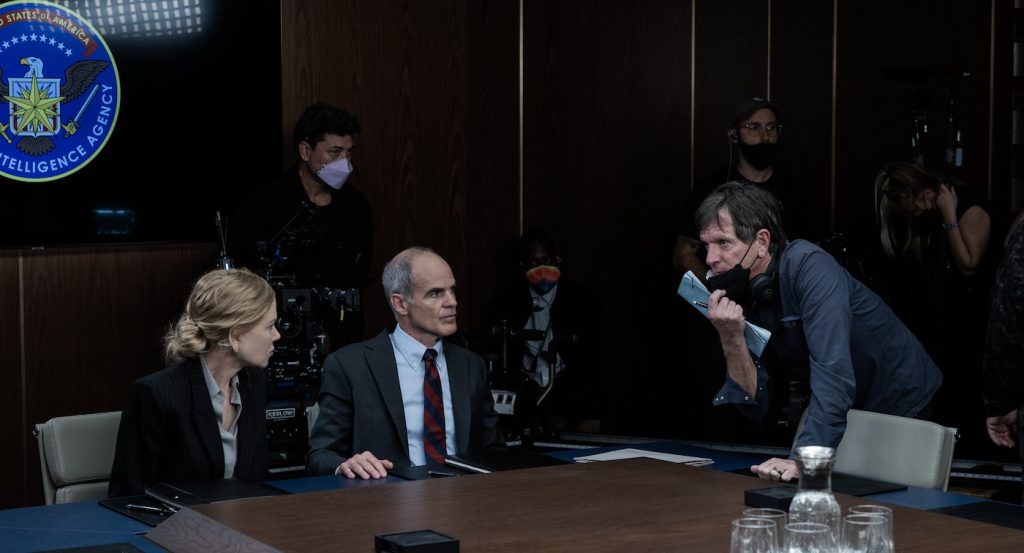
Sometimes, he’ll feel strongly about the direction of a scene and want it to go a certain way. “And it can take three or four takes of subtly moving something in a certain way. But there are other times where the best thing I can do is just let go and say, ‘You know, they’re portraying these characters, and they are in complete understanding of this dialogue. It’s incredibly powerful. Whatever expectations I have don’t matter because what they’re doing is absolutely amazing. That’s the other part of directing that I’m learning is how to balance conceiving of an idea of the outcome of the scene and being very open to surprises and changes that the actors bring to it. And that’s always the important balance.”
For instance, in a meeting in the White House Cabinet Room in Cameron’s Episode 106, Morgan Freeman’s Secretary Mullins listens to an obviously bogus explanation by one of Joe’s counterparts, Kyle (Thad Luckinbill), and appears to begin responding in support of Kyle’s explanation, before ripping him a new one for his B.S. “With that, during the first couple of rehearsals with Morgan, I could see the direction where he was lighting up to that moment,” Cameron says. “And, after a few rehearsals, we tried a couple of other possibilities, different exchanges around the room. And it was evident that his first choice was the right choice.”
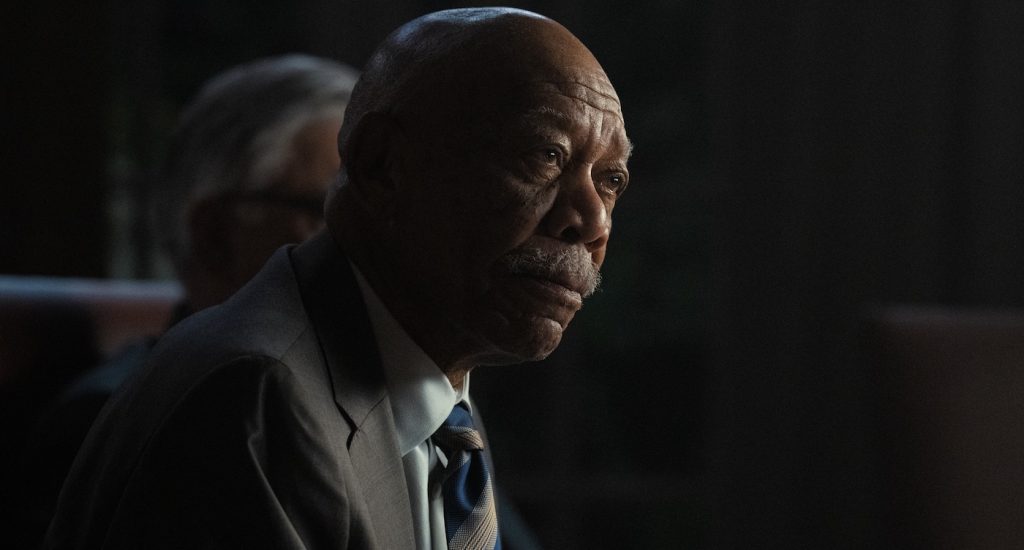
Sometimes, dialogue can be filled with so much technical military jargon and instructions that it can be difficult for the audience to follow. In Episode 105, for instance, Kidman’s character delivers a rapid explanation to the San Antonio local authorities of the many complex steps the team will take. “She’s explaining the backbone of the operation and giving them the opportunity to step up to support or step aside – but it’s going to go her way. But it’s really about the subtext, not the details,” Cameron explains. “There’s a layer of dialogue, and then the reality of the meaning. By telling them something a particular way, she’s giving them an opportunity to step away or show support and take the credit for it later. She’s the puppeteer. She knows exactly the outcome of this conversation.”
With such amazing talent in front of his camera, Cameron sometimes just how to allow the actor’s performance to drive his approach. In Episode 105, Saldaña delivers what is probably the series’ longest scene – and one of its most emotionally poignant. On a return from the field, she takes some time to have an important talk with her teenage daughter, Kate (Hannah Love Lanier), one which brings incredible healing to their difficult relationship. “Zoe’s giving 17 years of motherhood in eight minutes. She’s afraid this might be the last time she’ll see her again,” Cameron explains.
He was concerned about the length of the scene, so he contacted Taylor Sheridan and asked, “How do we sustain an audience with this eight-minute scene and not crack people because it’s so intense?” Cameron recalls. And Taylor’s response? “I wouldn’t worry about it. There’s a version of the scene where we just cut to Joe looking at Kate in the bed, and she doesn’t say anything. And it should be as emotional as the eight minutes of dialogue.” Cameron then did away with dozens of takes of coverage and just let the camera roll. “I’m gonna sacrifice a number of setups and shots here. We’ll do eight or nine takes. And the actors wanted to do it all the way through. I later tried, in the edit, to find ways to truncate it to two or three minutes. But, invariably, I delivered the eight minutes, beginning to end.”
In many other series, such dramatic family scenes, intermixed with tough military action, might appear trite or forced. But between Sheridan’s writing and the powerful performances of the cast, it is anything but. “It’s really about understanding the writing and understanding the characters,” says Cameron. “Not only the arc of the story but the emotional arc of each character within the story. And that’s the fun for me, directing now. I’m so used to shaping things with cameras and light, and now, I’m trying to shoot things with scripts and actors. It’s a nice transition.”
Special Ops: Lioness is streaming on Paramount+
For more films and series from Paramount and Paramount+, check out these stories:
“Killers of the Flower Moon” Star Lily Gladstone Takes Center Stage in New Video
“Killers of the Flower Moon” Star Robert De Niro the Focus of New Character Video
Featured image: L-R Austin Hébert as Randy, Zoe Saldana as Joe with director Paul Cameron for Special Ops: Lioness, episode 5, season 1, streaming on Paramount+, 2023. Photo Credit: Greg Lewis/Paramount+



